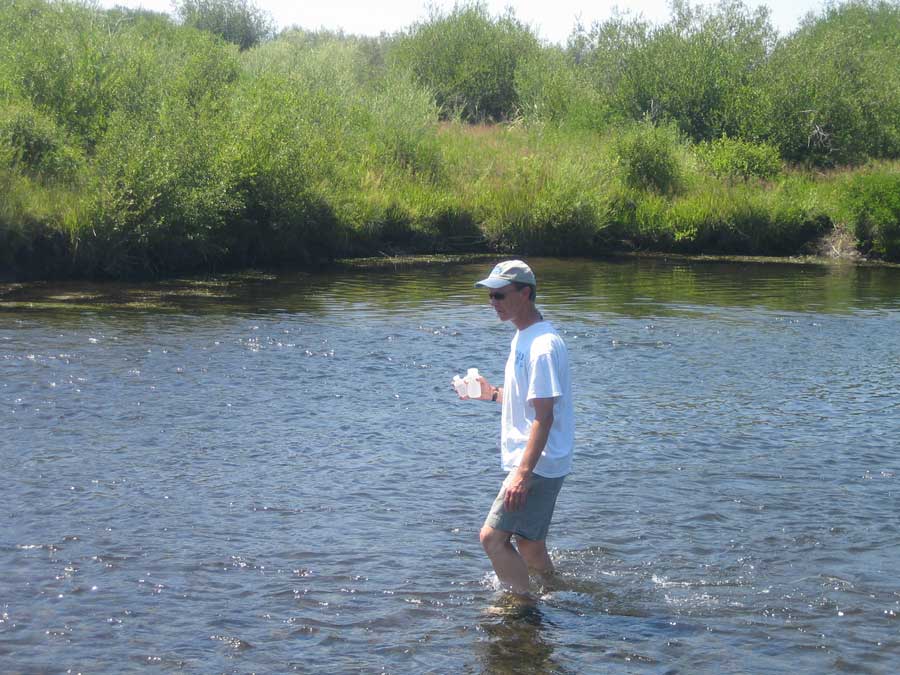Radio diary follows geochemist as he tracks the movement of heavy metals

This summer, people worldwide have been able to join Virginia Tech Geochemist Michael Hochella as he traced heavy metals in the headwaters of Montana's Clark Fork River to learn how nanoparticles speed the movement of pollution downstream from a contaminated mine site.
For the past 18 months, funded by the National Science Foundation, well-known independent radio producer Jim Metzner has been giving recording equipment to scientists and asking them to document their work in their own words. Hochella was one of those selected to strap on a tape recorder as he did his research and talk about his work for Pulse of the Planet’s Science Diaries. Nine radio segments were produced from Hochella’s recordings, and they have been airing on more than 300 radio stations in 20 countries this summer.
A Virginia Tech University Distinguished Professor, Mike Hochella studies processes near the earth's surface that affect water chemistry and the environment. Hochella is a pioneer in the emerging fields of nano-mineralogy and mineral-microbe interaction. He has applied this research to many areas of earth and environmental science, particularly environmental contamination issues, such as tracking the movement of heavy metals and developing cleanup strategies based on minerals that aggressively absorb toxins.
The research that is featured on Pulse of the Planet is a living mystery solved by Hochella and his colleague Johnnie Moore of the University of Montana using the latest in scientific equipment, a new and special transmission electron microscope (TEM). They have discovered how copper, zinc, lead, and arsenic have traveled hundreds of miles from the 600-square-mile Butte, Anaconda mining area. The scientists waded in snow-melt streams to collect their samples and Hochella returned to his Virginia Tech lab to examine the contents of the water, only to be delayed by bugs in the equipment and other duties. The plot advanced again with the assistance of Ph.D. candidate Kelly Haus and a $2 million addition to the $2 million TEM.
Finally, Hochella and his students can see minerals at the atomic level – five nanometers (a human hair is 80,000 nanometers wide). They discover that nanoparticles of common minerals only a few tens of atoms across – basically the size of large molecules – can carry traces of heavy metals.
“These tiny amounts of a toxic heavy metal could either be very harmful, or entirely harmless, to life in and around the river. That all depends upon how the particles are structured, which is the next question that Michael Hochella and his team are trying to find out,” said Metzner in his teaser ending to the Aug. 13 program. The next segment of “How Toxins Move” is Sept. 5. Listen online.
In addition to being posted on the web, the audio diaries have been carried on National Public Radio. Hochella’s features, aired or will air on June 29, July 9, 10, 23, 24, and 30, Aug. 8 and 13, and Sept. 5.
Now Hochella is posting a Blog on “How we ‘see’ and study nanoparticles in the Clark Fork River,” also hosted by Pulse of the Planet.
Hochella describes the challenge of his research: “Our job, collectively, is to figure out what nature with man’s overprint has given us, and how the system works. Then it’s up to politicians, citizens, lawyers, engineers, and business leaders to do something about it.”






.jpg.transform/m-medium/image.jpg)
